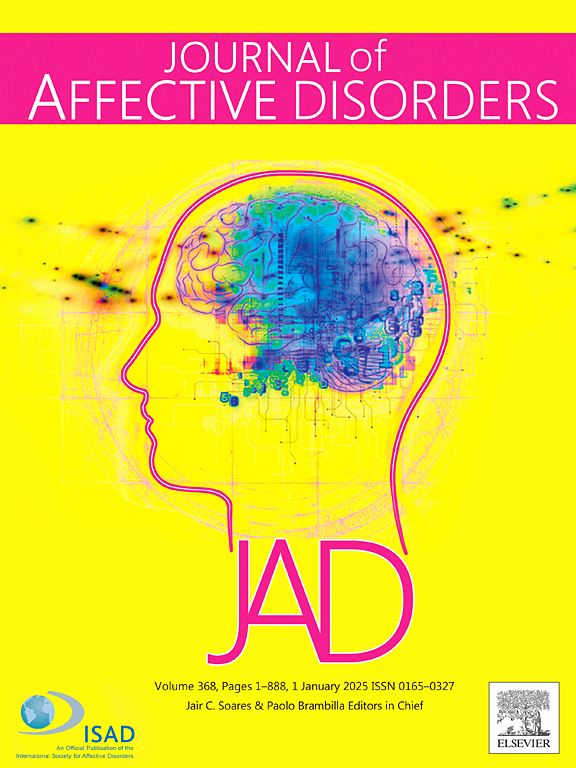Symptom modulation and tolerability of intravenous ketamine in treatment-resistant bipolar depression: A retrospective study
IF 4.9
2区 医学
Q1 CLINICAL NEUROLOGY
引用次数: 0
Abstract
Ketamine's use in treating bipolar depression must account for risks, such as switching to manic episodes or worsening symptoms. This study examines ketamine's impact on depressive symptoms, focusing on ‘inner tension,’ ‘sleep reduction,’ and ‘suicidal ideation’ over four weeks in treatment-resistant bipolar disorder (TR-BD) patients. Fifty-nine patients with TR-BD were treated consecutively with ketamine (avg dose 0.8 mg/kg). Results showed significant reductions in MADRS scores without manic switches. Ketamine was well-tolerated despite polypharmacy.
Antidepressant treatment of bipolar depression requires great caution because of the risk of switching to manic-mixed episodes and worsening of symptoms such as internal tension, psychomotor agitation, and suicide risk. The aim of this study was to evaluate the efficiency and tolerability of intravenous ketamine in patients with bipolar I or bipolar II disorder and a current treatment-resistant depressive episode (TR-BD), with the aim of examining: 1) the risk of manic switches; 2) the effect on global depressive symptoms as measured by the Montgomery-Åsberg Depression Rating Scale (MADRS); and 3) the specific effects on the MADRS items of internal tension, sleep disturbance, and suicidal ideation over a four-week period. Fiftynine patients with TR-BD (51.4 ± 12.3 years; 30 % female) treated consecutively with intravenous ketamine (mean dose 0.8 mg/kg) were included in this study. No ketamine-treated patient experienced a manic switch during the observation period. A statistically significant decrease (i.e., improvement) in MADRS global score and scores on the Internal Tension, Reduced Sleep, and Suicidal Ideation items was observed from the second week, with no evidence of worsening of the above symptoms. Patient-reported adverse events were generally mild to moderate.
求助全文
约1分钟内获得全文
求助全文
来源期刊

Journal of affective disorders
医学-精神病学
CiteScore
10.90
自引率
6.10%
发文量
1319
审稿时长
9.3 weeks
期刊介绍:
The Journal of Affective Disorders publishes papers concerned with affective disorders in the widest sense: depression, mania, mood spectrum, emotions and personality, anxiety and stress. It is interdisciplinary and aims to bring together different approaches for a diverse readership. Top quality papers will be accepted dealing with any aspect of affective disorders, including neuroimaging, cognitive neurosciences, genetics, molecular biology, experimental and clinical neurosciences, pharmacology, neuroimmunoendocrinology, intervention and treatment trials.
 求助内容:
求助内容: 应助结果提醒方式:
应助结果提醒方式:


